By Mike Andrici on Sep 12, 2012
When it comes to rivalry in the smartphone Universe, the dispute does not come any more intense than it is between Apple’s iPhone line and Samsung’s Galaxy S line. By Mike Andrici on Sep 12, 2012
Samsung and Apple are the two absolute leaders in the smartphone market, account for 50% of the smartphones sold each month (Apple sells an iPhone for any two smartphones sold by Samsung) and 90% of all profits made during the first quarter by all smartphone manufacturers, not to mention that the two giants and are involved in numerous legal battles across the globe.
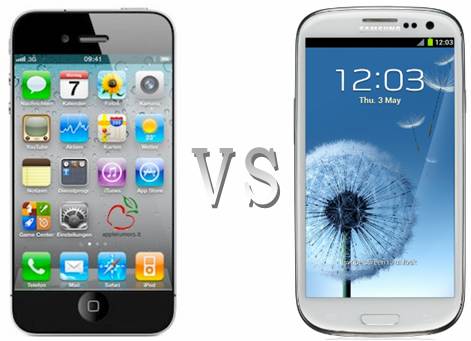
For all intents and purposes, I find it fairly safe to claim that Apple is Samsung’s nemesis and vice versa, which is kind of a strange thing considering that the South Korean giant has manufactured a lot of the components that you can find in the new Apple iPad and the iPhone 4S. Apple is now rumored to diversify its supply chain sources, although reason dictates that this will surely draw a moderate hole in the Cupertino based profit margins, for reasons I’ve talked about in the previous article here.
Now that Apple has finally unveiled the most hyped smartphone in the history of mankind (it’s funny how I used to say the exact same thing about the Samsung Galaxy S3 when I was comparing it against the HTC One X a few months back), it is time for a thorough analysis of the differences between the Apple iPhone 5 and the Samsung Galaxy S3. But first, time for a bit of a context!
The Context
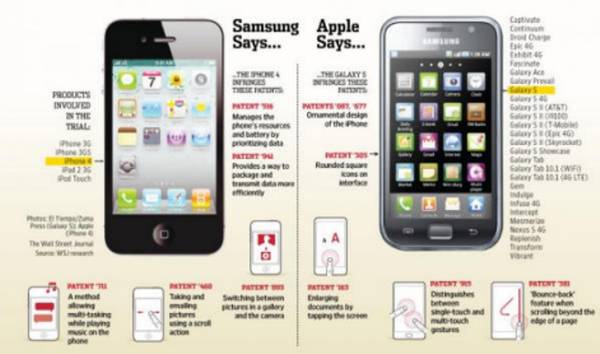
Those of you that have followed our blog during the past couple months or so know that a jury led by U.S. Judge Lucy Koch has recently decided that the first two models of the Samsung Galaxy S line copied Apple’s iPhone in such a manner that infringes upon the law in the US. The original Samsung Galaxy S was designed to compete against the iPhone 3GS, while the Galaxy S2 was designed to compete against the Apple iPhone 4. As it turned out, the jury has decided that Samsung copied a bit too much from Apple, hence the imminent ban in the U.S. for the various models of the Galaxy S and Galaxy S2.
Conspiracy Theory Note #1: As Samsung was found to be not guilty of infringing iPhone design patents in other parts of the world, some argue that it is not a coincidence that the only country where Samsung has lost its legal battle against Apple is the U,S,, Apple’s home country. This rumor is fueled by the fact that a successful launch of the new Apple iPhone 5 is expected to significantly boost the U.S. GDP.
However, when it comes to the Samsung Galaxy S3, there is little reason for Apple to claim that Samsung’s latest flagship is also copying Apple’s iPhone line. In fact, some people actually claim the design for the Samsung Galaxy S3 looks to be influenced a bit too much by Samsung lawyers. Add the several modifications made to the S3’s software, and I personally find rumors of a possible Galaxy S3 ban in the U.S. a bit too exaggerated. On the other hand, if Apple is to be successful in banning the Samsung Galaxy S3 in the U.S., it will surely pave the way for the Apple iPhone 5 launch to be the most successful smartphone launch in history.
Since we’ve mentioned sale numbers, let’s also take a quick minute to review this aspect as well, shall we? Samsung has recently announced that it has sold more than 20 million Galaxy S3 units in just a bit more than three months. Impressive as that may sound like, the Apple iPhone 4S has sold more than 30 million units in the first three months since its launch, making it the best selling smartphone to ever go into production. For more on Apple’s and Samsung’s sales number in the U.S., check out this previous article.
All experts expect the Apple iPhone 5 to best the record set by its predecessor (I’m sure that the Galaxy S4 will also break the S3′s sales record in the Android Universe). It’s not the fact that Apple and Samsung smartphones get better with each generation (which they obviously do) what dictates these record breaking sales, but instead the fact that more and more people turn to smartphones nowadays.
Ok, so let’s get it on: will the Apple iPhone 5 dethrone the international version of the Galaxy S3 as the best smartphone in the world? Time to find out!
Display & Design
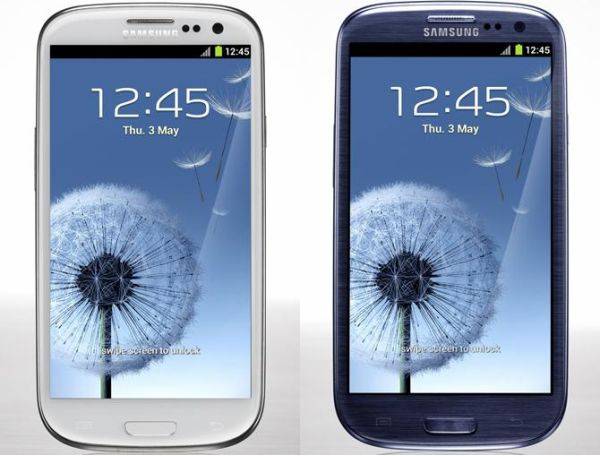
As all Android fans well know, the Samsung Galaxy S3 uses a 4.8-inch Super AMOLED HD display, one that runs at a 1280 x 720 pixel resolution and features a 302 PPI (Pixel Per Inch) density. Unfortunately, at the time when Samsung oficially announced the Galaxy S3, many have been disappointed by the fact that the display on the third incarnation of the Samsung Galaxy S line featured a PenTile display, and not one based on a true RGB matrix (as is the case with the display on the other Samsung flagship, the Galaxy Note 2).
On the other hand, some argue that at this density the differences between a PenTile display and one based on a complete RGB matrix are barely noticeable when using the display at a “regular” viewing distance.
Overall, the Galaxy S3 features one of the best 720p (16:9 aspect ratio) displays around, with vibrant colors, high contrast, albeit some feel that the color reproduction on Super AMOLED displays is a little bit off when compared against regular LCD displays.
The biggest change that the Apple iPhone 5 brings to the most successful smartphone line ever is a longer display. While all 5 previous iPhone models (the original iPhone, the iPhone 3G, the iPhone 3GS, the iPhone 4 and the iPhone 4S in the order of their release) featured a 3.5-inch display, the iPhone 5 comes with a 4-inch display. Unfortunately, since the display is actually exactly as wide as it was with the iPhone 4S, running at a 1136 x 640 resolution (thus obtaining a 326 PPI ratio, just barely under the 330 PPI density showcased by the iPhone 4S).
As the iPhone 5 could not stray away from compatibility with existing apps, apps that are not designed with the iPhone 5 in mind will be letterboxed (meaning you’ll get 86 black pixels at the top as well as at the bottom). The visual elements you are already used to on the iPhone do not grow bigger with the iPhone 5, although the canvas just got taller, meaning there is space for more elements on it. Running 720p videos on a display that is just a little under that resolution requires extra operations from the processor, although this task is definitely an easy one for the iPhone 5 internals.
But how do the extra 0.8 inches across the diagonal of the display translate into differences for the actual footprint? The Samsung Galaxy S3 measures 136.6 x 70.6 x 8.6 mm and weighs 133 grams. In the Apple corner, the iPhone 5 measures 123.8 x 58.5 x 7.6 mm and weighs 112 grams.
While it was expected for the iPhone 5 to be less wide and tall when compared against the Galaxy S3, the fact that the iPhone 5 is a whole centimeter slimmer is a bit of a welcomed surprise. The aluminum unibody design is another one!
Verdict:If you want a big (4.8-inch) 720p screen with some of the most vivid colors ever reproduced by a display, get the Samsung Galaxy S3. If you want a more compact (slim and pocketable) design and are willing to sacrifice a bit of screen real estate, go for the iPhone 5.
Internal Hardware
CPU, GPU & RAM
The international version Samsung Galaxy S3 features the Exynos 4412 Quad SoC from Samsung, one that packs together a 1.4 quad-core A9 processor and a Mali 400MP GPU. The U.S. version of the Samsung Galaxy S3 (an LTE capable version) is based on Qualcomm’s Snapdragon S4 SoC, one that packs together a 1.5GHz dual-core Krait CPU and an Adreno 220 GPU. Benchmark results clearly denote that the quad-core international version of the S3 is considerably faster than its S4 counterpart.
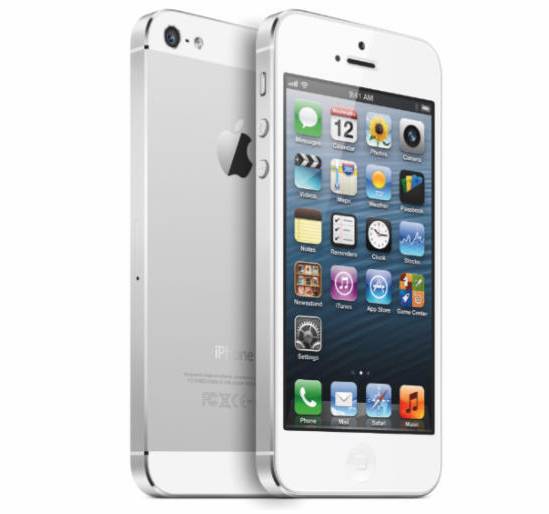
On the other hand, the newly announced iPhone 5 uses the new Apple A6 SoC. Although the processor is not quad-core as many might have expected, Apple claims that the dual-core CPU inside the A6 is twice as powerful as the dual-core processor used in the iPhone 4S. The GPU inside the Apple iPhone 5 is also touted to be twice as fast the GPU used by the iPhone 4S. We’ll have to wait until we get our hands on an iPhone 5 benchmark results before we buy into it, but there is a big chance that all these claims are true, as the A6 is probably even faster than the A5X chip that you can find inside the new iPad. And that is saying a lot.
Although I’m as big of an Android fan as they get, the reality is that the Apple iPhone 5 will deliver graphics performance well beyond the top of the Android crop, and CPU performance that’s at least on par with the international version of the Samsung Galaxy S3 (the fastest Android smartphone there is). The U.S., Qualcomm S4 version of the Samsung Galaxy S3 badly loses its spec war against the Apple iPhone 5.
LTE
As devout Samsung fans well know, the South Korean giant has decided to slightly dumb down – not referring to search here – its U.S. version of the Galaxy S3 in order to accommodate LTE compatibility. While the S4 SoC inside the U.S. version is exactly the same thing that you can find inside the HTC One X, the Motorola Droid RAZR HD and many other LTE-enabled smartphones in the U.S. (meaning it’s quite fast actually,) the reality is that the Exynos 4412 SoC is what makes the international version of the Galaxy S3.
On the other hand, Apple has managed to come up with global LTE compatibility for their new iPhone, meaning there are no performance compromises to make for choosing the LTE enabled version of the new iPhone 5. A single version of the iPhone will be able to browse LTE connections in various parts of the world (Verizon, AT&T and Sprint were all confirmed as carriers for the iPhone 5).
Storage Space & Cameras
While both the Galaxy S3 and the iPhone 5 come in 16 GB, 32 GB and 64 GB versions, only the Android flagship can extend its internal storage via an SD card. Transfer rates are not as big on the SD card as they are on the flash memory, but having the option to buy an extra 64 GB of extra storage space for just a bit over $50 looks like a good choice to be able to make.
On to the cameras, there’s nothing impressive to see here, as both cameras should be enough for your basic point and shoot needs, and nothing more. The S3 uses an 8MP primary camera and a 2MP secondary camera, while the iPhone 5 uses a 8-megapixel sensor with a 5-element lens and f/2.4 aperture as the primary camera and a 720p secondary camera.
Verdict: The iPhone 5 is currently the best smartphone in the world when it comes to raw processing power, and also the best LTE capable smartphone ever.
Operating System
The Samsung Galaxy S3 is currently officially using Android 4.0 Ice Cream Sandwich, with Samsung’s TouchWiz UI on top. Although Samsung’s take on the visual interface for Google’s mobile OS isn’t something that Android purists enjoy, Samsung at least seem to be on the right track, since the UI on the S3 is less cluttered and complicated than what we’ve seen on previous Galaxy S models.
In addition, the Smart Actions (that we’ve talked more about in this previous article) are a unique and most welcomed tweak, although nothing that will blow your mind. According to the latest information, the Samsung Galaxy S3 is expected to get Android 4.1 Jelly Bean at some point in October.
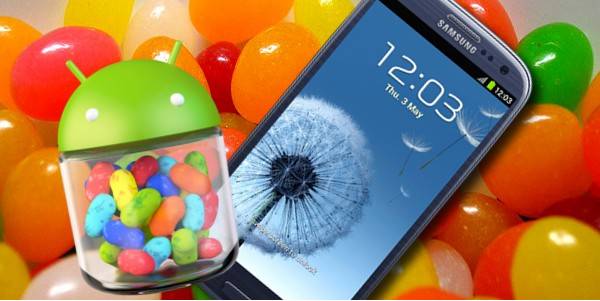
In the other corner, Apple has decided to roll out their iOS 6 with the Apple iPhone 5. While iOS 6 represents an incremental step forward, the new iPhone operating system is still a locked garden. While iPhone 5 users will have access to a butt-load of properly optimized apps, there is little you can do as far as customization goes.
Verdict: I may be subjective, but I find Android to be better than any other mobile OS out there. I don’t like the chains attached to the locked down iOS.
Price & Release Date
The international version of the Samsung Galaxy S3 was launched back in May 2012 and is priced starting at $600 for the 16 GB model. The U.S. version of the Galaxy S3 was launched in June 2012 and is available unlocked starting at roughly the same price as its international brother.
On the other hand, the Apple iPhone 5 will be released on September 21 in the U.S. and eight other countries, with up to 100 markets to get it in December. The 16 GB version of the iPhone 5 is priced at $199, while the 32 GB and 64 GB are priced at $299, and $399 respectively – these are all on-contract prices.
The Conclusion
So what do all the chapters above add up to? Which one is better: the Galaxy S3 or the iPhone 5? Well, I know most of you were hoping for a definitive answer, but as far as I’m concerned, it’s really all about personal preference!
The Samsung Galaxy S3 has the advantage of a bigger display and an array of customizations that can be made thanks to its Android operating system.
The Apple iPhone 5 has the advantage of a better optimized ecosystem, no LTE compromises, as well as slightly better internal specs.
So what do you guys think?
Read the original post at:
http://www.androidauthority.com/apple-iphone-5-vs-samsung-galaxy-s3-114213/

 Home
Home



